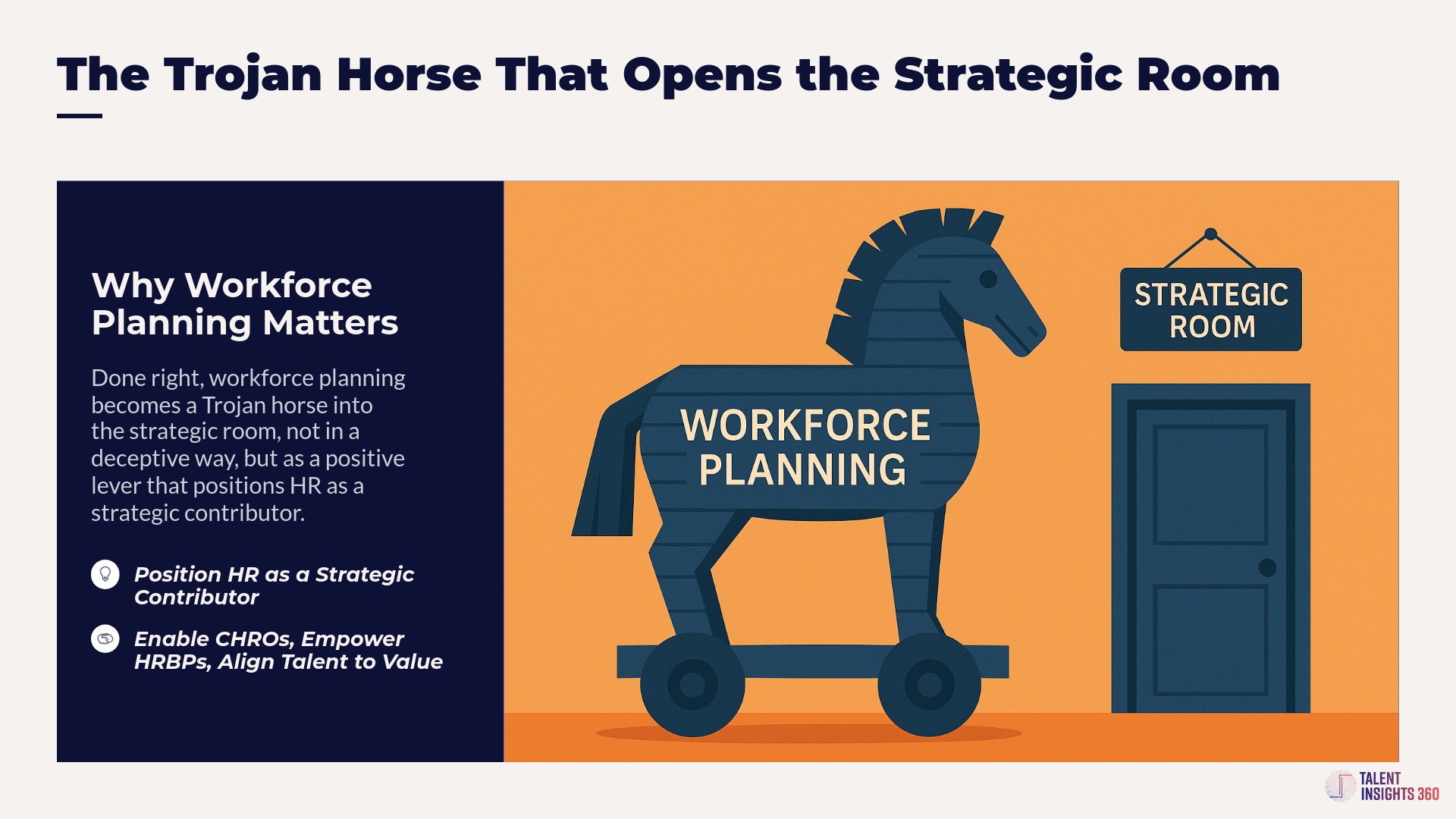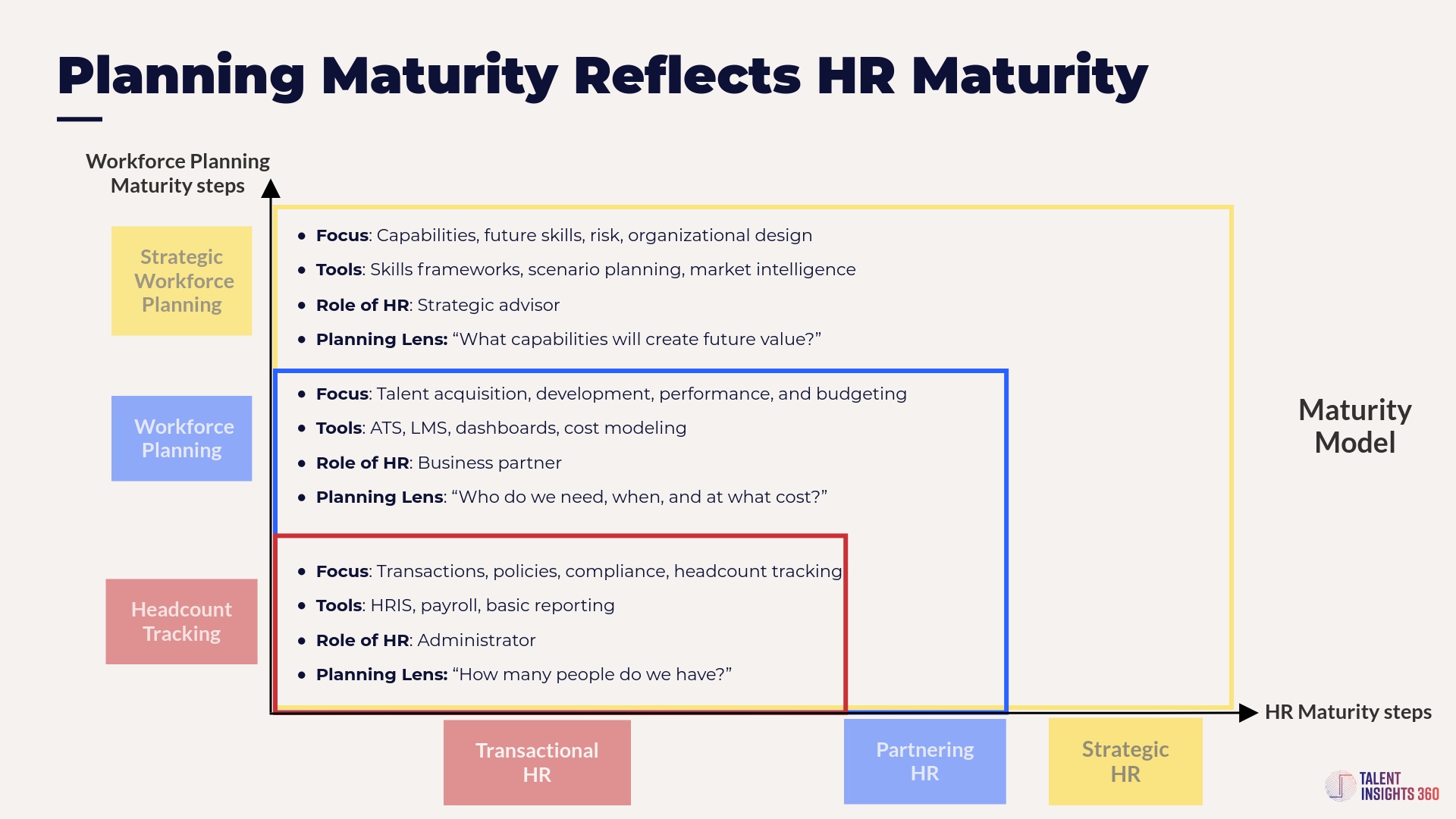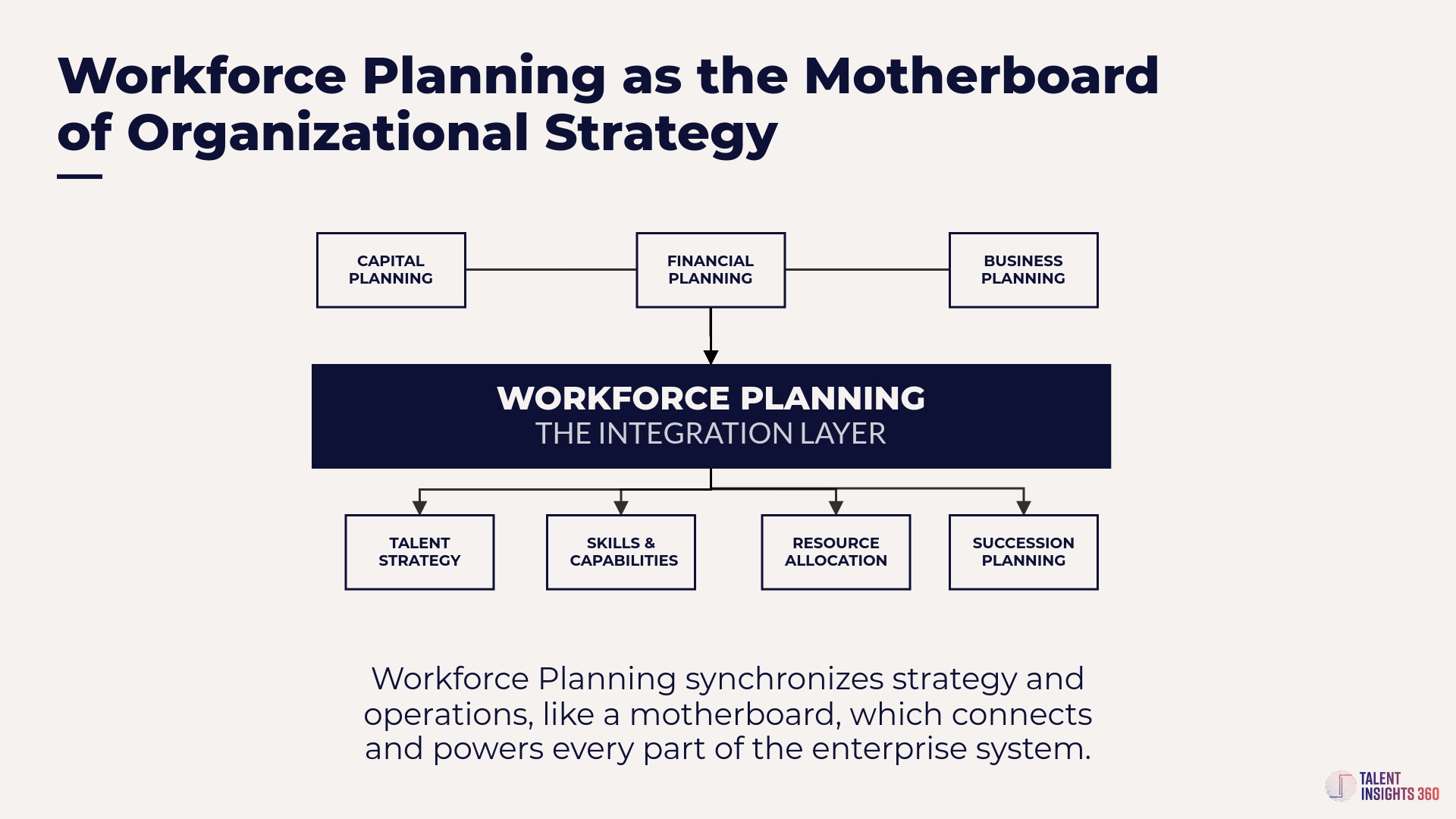
Share Badr Ait Ahmed The Illusion of Strategic HR Without Data For decades, HR has been trying to earn a “seat at the table.” Many

Workforce planning is gaining visibility in boardrooms and executive teams. Like a cyclical wave, it resurfaces with urgency during periods of disruption. Today, tariff shifts, geopolitical tensions, AI adoption, and economic slowdowns are prompting a return to strategic workforce planning conversations. The importance of this topic cannot be overstated, as it directly impacts an organization’s ability to adapt and remain competitive.
Leaders are asking: Do we have the right people to deliver our strategy, adapt to change, and remain competitive? Yet, in many organizations, workforce planning remains a tactical, Finance or HR-owned exercise focused on managing headcount and vacancies.
The problem isn’t the idea of workforce planning itself. It’s the maturity of the function behind it. You can’t expect strategic outcomes from an operational HR foundation. If HR is still operating in a transactional mode, focused on compliance, data administration, and reactive service delivery, then workforce planning will reflect exactly that: a volume exercise, not a strategic tool.
This article explores the transformative impact of HR maturity on workforce planning. It introduces the concept that workforce planning can serve as a ‘Trojan horse’—a strategic entry point that empowers HR to gain legitimate influence in business decisions.
Done right, workforce planning becomes a Trojan horse into the strategic room, not in a deceptive way, but as a positive lever that positions HR as a strategic contributor. It enables CHROs to elevate HR’s role, empowers HRBPs to drive deeper conversations with business leaders, and allows workforce planning teams to tie talent to value.

It also outlines the necessary steps to transition from tactical, dollar-driven forecasting to strategic workforce architecture, inspiring HR leaders to embrace this evolution.
Used well, workforce planning becomes a conduit for aligning human capital to business priorities, enabling CHROs, HRBPs, and workforce teams to demonstrate value and drive impact.
When HR functions operate in a traditional administrative model, workforce planning is typically reduced to:
This model is not workforce planning—it’s vacancy management. It focuses on efficiency in hiring, not alignment with long-term capability needs. The questions asked are narrow: How many people do we need? What’s the budget? When do they start?
What’s missing is the context: Why do we need them? What are we trying to build as a business? Are we prioritizing the right roles?
Tactical HR delivers tactical planning. The maturity of the function defines the ceiling for what the planning process can accomplish.
Without HR evolving to this third stage, strategic workforce planning remains out of reach. You can’t expect foresight from a function buried in fire drills.
There is a direct correlation between how HR is positioned in the organization and the type of workforce planning it enables.
The evolution typically looks like this:
HR is focused on compliance, payroll, and data integrity. Planning is a spreadsheet-based exercise handled by HRBP or Talent Acquisition with limited business involvement.
HR starts engaging business leaders to understand staffing needs. Some cost modelling and timing discussions enter the process. Planning is tied to budget, but it is still reactive.
HR operates as a talent architect. Planning is tied to business strategy, risk, and capability. Skills data, market intelligence, and scenario planning inform decisions.

If HR maturity hasn’t evolved, you’ll see apparent symptoms in your planning process:
One of the clearest red flags is that executives expect strategic guidance from HR but instead receive hiring timelines and historical attrition data.
As one client executive put it: “We asked for a view of the future. We got a headcount list sorted by department.”
To unlock strategic workforce planning, the HR function must evolve. Workforce planning, when used strategically, can be a shared win across the function: a way for CHROs to gain strategic relevance, HRBPs to deepen partnerships with business leaders, and workforce planning teams to demonstrate direct business impact. That doesn’t mean abandoning operational excellence—it means building on it to become a true partner in shaping the future workforce.
What specific steps can HR take to evolve from a transactional to a strategic function?
Here are four moves that mark this evolution:
How can organizations measure the effectiveness of their workforce planning about business outcomes?
What role does technology play in enhancing HR maturity and strategic workforce planning?
This shift transforms workforce planning from a reactive exercise to a forward-looking discipline that helps answer the big questions:
At an organizational level, workforce planning serves as the missing integration layer, connecting capital planning, financial forecasting, business strategy, and human capital planning. Like a motherboard that aligns processors, memory, and peripherals in a synchronized system, workforce planning aligns talent decisions with enterprise priorities, ensuring every planning stream is connected and coherent.

Strategic workforce planning doesn’t start with a template. It begins with the HR function behind it. If HR is still viewed as a service provider, workforce planning will continue to be operational. But if HR steps into its role as a strategic talent architect, it becomes the engine that aligns people, capabilities, and strategy.
Before you elevate the planning process, elevate the function driving it. Use workforce planning as a Trojan horse in the strategic room. When done right, everyone wins: the CHRO, the HRBP, and the business.

Share Badr Ait Ahmed The Illusion of Strategic HR Without Data For decades, HR has been trying to earn a “seat at the table.” Many

Share Badr Ait Ahmed Why Everyone Agrees Talent is Critical — But Almost No One Embeds It Into Strategy Walk into any boardroom, private equity

Share Badr Ait Ahmed For decades, enterprise value has been modelled through balance sheets, EBITDA multiples, and discounted cash flows, an impressive exercise in precision

Share Badr Ait Ahmed From Risk to Leverage: Why Human Capital Readiness is a Seller’s Hidden Deal Advantage In every M&A transaction, due diligence is

Share Badr Ait Ahmed Why the maturity of your HR function sets the ceiling for workforce planning impact Workforce planning is gaining visibility in

Share Badr Ait Ahmed Geopolitical instability, tariffs, and digital disruption have significantly changed today’s deal environment. Strategic mergers and acquisitions (M&A) dropped by 39%